How To Determine the Number of Movers Required for Piano Moving
Moving a piano can be a challenging task, and one of the crucial aspects to consider is the number of movers needed to ensure a safe and efficient relocation. This guide will walk you through the steps of determining the ideal number of movers for your piano move.
Understanding Piano Types and Sizes
How To Identify Different Types of Pianos
Before you can determine the number of movers needed, it’s essential to identify the type of piano you’ll be moving. Pianos come in various sizes and styles, including grand pianos, upright pianos, and digital pianos.
- Grand Pianos: Grand pianos are known for their large and elegant design. They come in different sizes, with concert grand pianos being the largest and baby grand pianos being smaller. The size of the grand piano significantly influences the manpower required for the move.
- Upright Pianos: Upright pianos have a more compact vertical design. They are generally smaller and lighter than grand pianos but can still be challenging to move due to their weight and dimensions.
- Digital Pianos: Digital pianos are the most compact and lightweight among the piano types. They are portable and often preferred for their convenience. Moving a digital piano typically requires fewer movers compared to acoustic pianos.
Measuring Average Weight and Dimensions
To determine the appropriate number of movers, it’s essential to know the average weight and dimensions of the piano you’re moving.
- Grand Pianos: On average, grand pianos can weigh between 500 to 1,200 pounds (227 to 544 kilograms) or more, depending on their size. The dimensions can range from 4.5 to over 9 feet in length.
- Upright Pianos: Upright pianos are generally lighter, with an average weight ranging from 300 to 800 pounds (136 to 363 kilograms). The height of an upright piano can vary from 3 to 5 feet.
- Digital Pianos: Digital pianos are the lightest, with an average weight of 50 to 150 pounds (23 to 68 kilograms), and their dimensions are compact, similar to a keyboard.
Understanding these factors will help you make an informed decision on the number of movers required for your piano move.
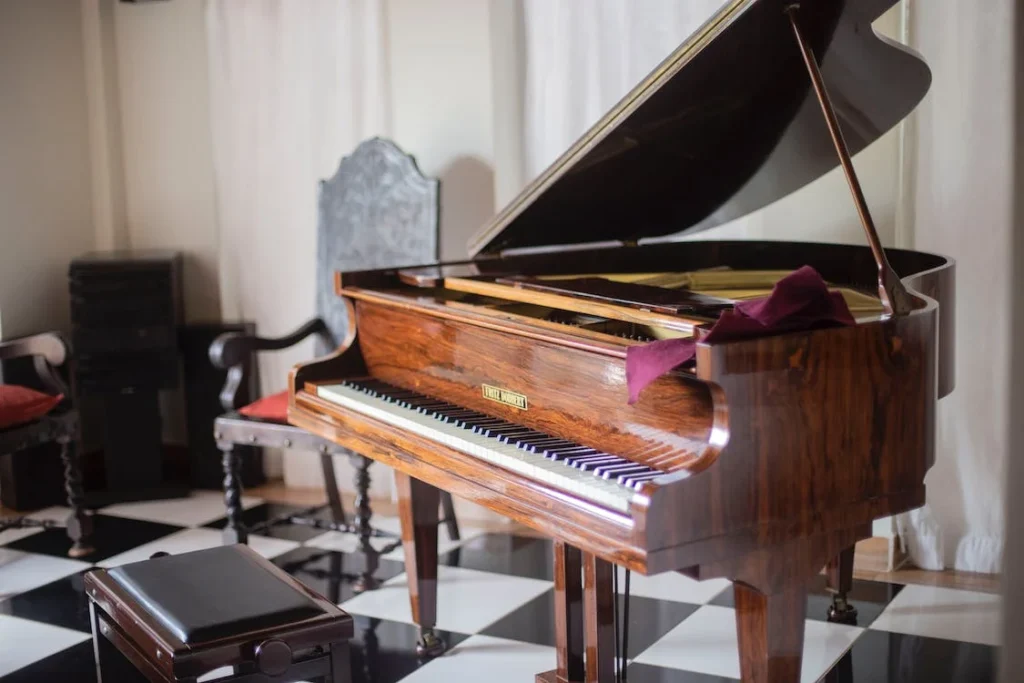
Factors Influencing Your Piano Moving Team
When it comes to moving a piano, several factors come into play, influencing your decision on the number of movers needed. Understanding these factors is crucial to ensure a smooth and safe piano relocation.
How To Assess Stairs and Elevators
Staircase Challenges
One of the primary factors that can affect the number of movers required is the presence of stairs in your moving path. Moving a piano up or down a staircase can be significantly more challenging than on a flat surface. Here’s how to assess the situation:
- Number of Stairs: Count the number of stairs involved in the move. A higher number of stairs will require additional manpower.
- Staircase Width: Measure the width of the staircase. Narrow staircases may necessitate more movers to navigate the piano safely.
- Staircase Condition: Assess the condition of the stairs. Uneven or damaged steps can make the move more complex and may require extra assistance.
Elevator Access
If you have access to an elevator in your building, it can simplify the piano moving process. However, there are still factors to consider:
- Elevator Size: Check the dimensions of the elevator to ensure that the piano can fit comfortably. A larger piano may require a larger elevator, or you may need to disassemble the piano for transport.
- Elevator Availability: Confirm the availability of the elevator during your move. If there are other residents or businesses sharing the elevator, scheduling may be necessary.
Overcoming Obstacles in the Path
In addition to stairs and elevators, other obstacles in the moving path can impact the number of movers required:
- Narrow Hallways: If you have narrow hallways or tight corners in your building, it may be necessary to have additional movers to navigate the piano through these spaces.
- Door Width: Measure the width of doorways and entrances to ensure the piano can pass through without difficulty. If not, consider removing doors or hinges.
- Parking and Loading Zones: Evaluate the proximity of parking and loading zones to your location. Longer distances may require more movers to transport the piano efficiently.
Choosing Between DIY and Professional Movers
Another crucial factor is whether you opt for a DIY approach or hire professional piano movers. The decision can significantly impact the number of people needed for the move:
- DIY Moving: If you choose to move the piano yourself, you’ll likely need to recruit friends or family members to assist. The number of helpers required will depend on the piano’s size and the moving path’s challenges.
- Professional Movers: Hiring experienced piano movers can streamline the process. They have the expertise and equipment to handle various piano types and challenging moving conditions, reducing the number of movers you’ll need to provide.
By carefully assessing these factors, you can make an informed decision on the number of movers required for your piano move.
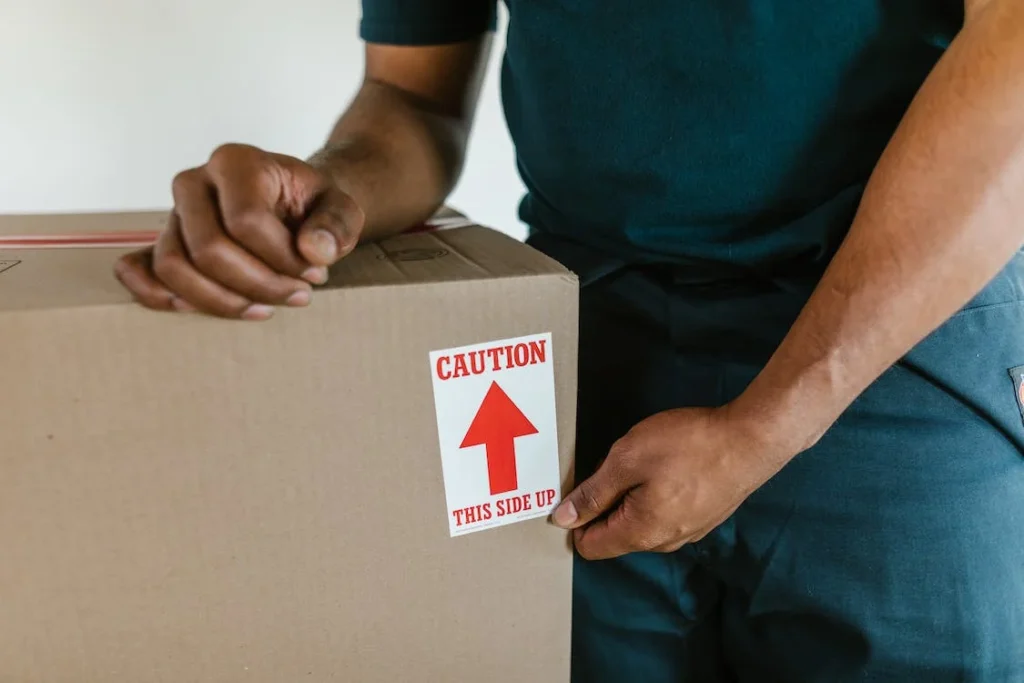
How To Calculate the Ideal Number of Movers
Calculating the ideal number of movers for your piano move is essential to ensure the safety of both your instrument and the moving team. By considering weight-bearing capacity and following best practices for safe moving, you can determine the appropriate number of movers required.
Evaluating Weight-Bearing Capacity
How To Assess the Piano’s Weight
Before moving your piano, it’s crucial to determine its weight accurately. Knowing the piano’s weight will help you calculate the number of movers needed:
- Grand Pianos: Weigh the grand piano using a suitable scale. Alternatively, check the manufacturer’s specifications for weight information specific to your piano model.
- Upright Pianos: Upright pianos can vary in weight, so it’s essential to check the manufacturer’s specifications or use a scale to weigh your specific piano.
- Digital Pianos: Digital pianos are typically the lightest of the three types. Refer to the manufacturer’s information for the exact weight of your digital piano.
Weight Distribution
Consider the weight distribution of the piano. Pianos are heavy on one end due to the cast iron frame and strings. Understanding the weight distribution helps in positioning the piano properly for lifting and moving.
Implementing Best Practices for Safe Moving
How To Safely Lift and Maneuver a Piano
Moving a piano safely requires following specific techniques and practices:
- Proper Lifting: Train your movers on proper lifting techniques, such as bending at the knees, keeping the back straight, and using the legs to lift.
- Team Coordination: Ensure effective communication and coordination among your moving team to prevent accidents and maintain balance during the move.
- Lifting Straps: Consider using lifting straps designed for moving heavy objects, including pianos. These straps can distribute the weight and make lifting more manageable.
- Moving Equipment: Utilize equipment such as piano skids, dollies, and ramps to aid in the safe and controlled movement of the piano.
Ensuring Path Safety
Make sure the moving path is clear and safe:
- Clear Pathways: Clear obstacles, clutter, and debris from the moving path to prevent tripping hazards.
- Secure Doorways: Remove doors or door hinges if necessary to widen the doorways and ensure a smooth passage for the piano.
Protective Measures
Take measures to protect both your piano and your movers:
- Protective Padding: Use protective padding and blankets to shield the piano from scratches and damage during the move.
- Team Safety Gear: Equip your movers with safety gear, such as gloves and appropriate footwear, to ensure their safety while handling the piano.
By evaluating the weight-bearing capacity of your piano and implementing best practices for safe moving, you can determine the ideal number of movers needed for a secure and successful piano relocation.

Essential Equipment and Tools for Piano Moving
When it comes to moving a piano, having the right equipment and tools is crucial to ensure a safe and efficient relocation process. Here’s a comprehensive guide on the essential equipment and tools you’ll need:
How To Use Piano Skids and Straps Effectively
Piano Skids
Piano skids, also known as piano boards or skid boards, are essential for transporting pianos. Here’s how to use them effectively:
- Positioning: Place the piano skids underneath the piano, ensuring they are evenly distributed to support the instrument’s weight.
- Secure Attachment: Use straps or harnesses to secure the piano to the skids firmly. Ensure the straps are tight but not too tight to avoid damaging the piano.
- Lifting Points: Identify the lifting points on the piano where the skids should be positioned. These points may vary depending on the piano type.
Lifting Straps
Lifting straps are valuable tools for distributing the weight of the piano and making it easier to lift. Here’s how to use them:
- Strap Placement: Position the lifting straps beneath the piano, ensuring they are secure and evenly spaced.
- Proper Lifting: Instruct your movers to use the lifting straps as handles to lift the piano. Ensure they use proper lifting techniques to avoid strain or injury.
Safeguarding Your Piano with Protective Padding and Blankets
Protective Padding
Protective padding and blankets are essential for preventing damage to your piano during the move. Here’s how to use them effectively:
- Wrap the Piano: Carefully wrap the piano in protective padding or blankets, ensuring that all exposed surfaces are covered.
- Secure with Straps: Use straps or tape to secure the padding in place, keeping it snug around the piano.
How To Maneuver Pianos with Dollies and Ramps
Dollies
Dollies are wheeled platforms designed for transporting heavy objects. Here’s how to use them:
- Positioning: Place the piano on a suitable dolly, ensuring that it is centered and secure.
- Steering: Assign movers to control the dolly and steer the piano in the desired direction.
- Smooth Movement: Push or pull the piano on the dolly smoothly, avoiding sudden jerks or stops.
Ramps
Ramps are useful for overcoming elevation changes and steps during the move. Here’s how to use them:
- Placement: Position the ramps securely at the base of stairs or steps, ensuring they are stable and won’t shift during the move.
- Safely Ascend or Descend: Carefully guide the piano up or down the ramps, maintaining control and balance.
By utilizing piano skids, straps, protective padding, blankets, dollies, and ramps effectively, you can ensure a safe and damage-free piano move.
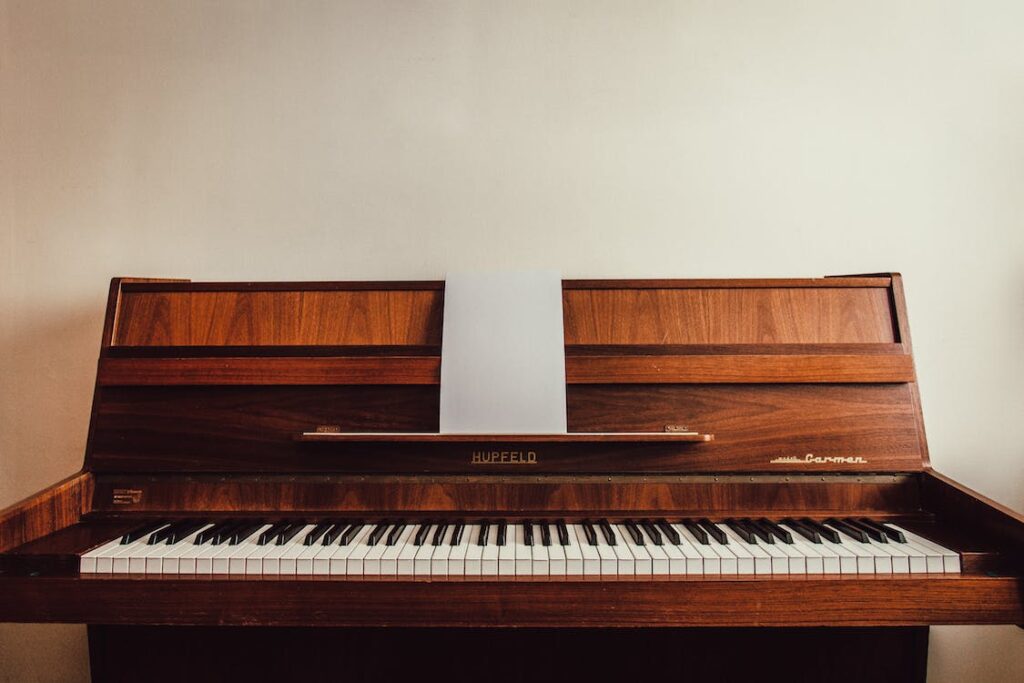
How To Move Different Types of Pianos
Moving different types of pianos, including grand pianos, upright pianos, and digital pianos, requires specific approaches and considerations. Here’s a guide on how to move each type effectively:
How To Form a Grand Piano Moving Team
Grand Piano Basics
Moving a grand piano is a complex task due to its size and weight. Here’s how to approach it:
- Team Size: For a grand piano, you typically need a team of at least four to six movers. The exact number may vary depending on the piano’s size and the specific challenges of the move.
- Positioning: Ensure that the piano is placed on its side on a piano skid. The movers should be positioned strategically to lift and support the piano evenly.
- Careful Maneuvering: Move the piano with extreme care, ensuring that it doesn’t tip over or sustain any damage during the process.
Assembling an Efficient Upright Piano Moving Crew
Upright Piano Considerations
Upright pianos are more compact but still require attention to detail during the move:
- Team Size: A team of two to four movers is typically sufficient for moving an upright piano. The exact number may depend on factors such as the piano’s weight and the complexity of the move.
- Secure Positioning: Ensure that the piano is positioned upright on a dolly. Use straps to secure it in place.
- Smooth Movement: Maneuver the piano smoothly, taking care to avoid bumping it into walls or obstacles.
Safely Transporting Digital Pianos
Digital Piano Portability
Digital pianos are the most portable of the three types, but they still require careful handling:
- Team Size: Typically, two movers are sufficient for moving a digital piano. These instruments are designed to be lightweight and easy to transport.
- Secure Transportation: Place the digital piano on a suitable dolly and secure it with straps. Ensure that the instrument is protected from bumps or shocks during the move.
Understanding the specific requirements for each type of piano will help you assemble the right moving team and equipment for a successful relocation.
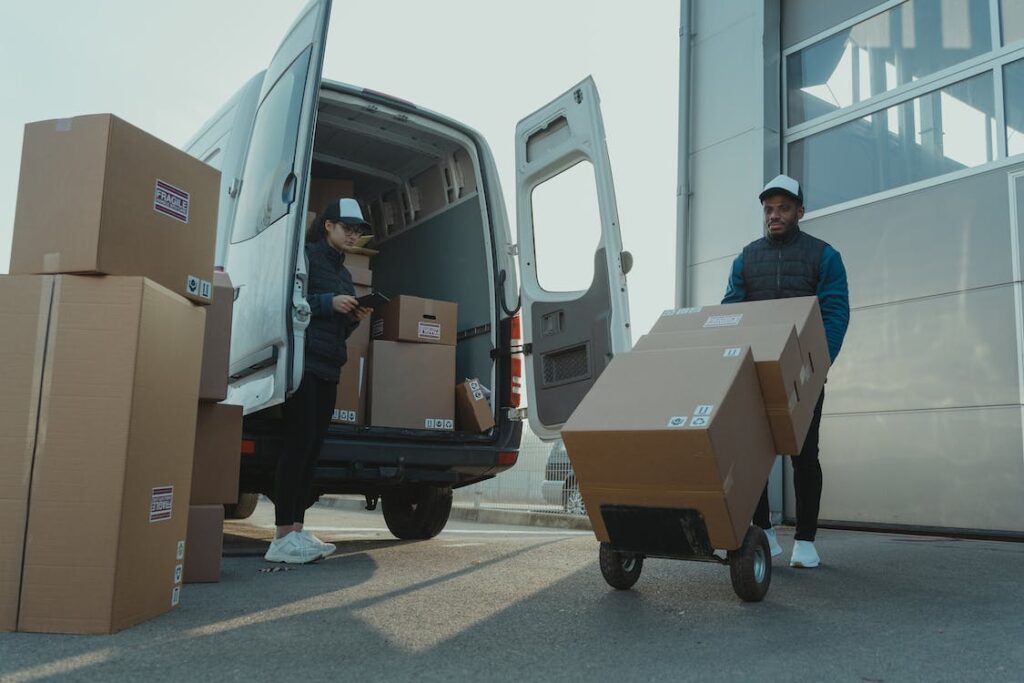
Ensuring Safety: How To Protect Yourself and Your Piano
Moving a piano is not only about protecting the instrument but also ensuring the safety of the moving team. Here are essential safety precautions and tips to keep in mind during your piano move:
How To Safeguard Your Back and Maintain Good Posture
Proper Lifting Techniques
Lifting a heavy piano can strain your back and lead to injuries if not done correctly. Here’s how to protect your back and maintain good posture:
- Bend Your Knees: Always bend your knees when lifting, keeping your back straight. This technique helps distribute the weight evenly and reduces the risk of back injuries.
- Use Your Legs: Lift with your leg muscles, not your back. Push up with your legs while keeping your back straight.
- Avoid Twisting: Refrain from twisting your body while carrying the piano. Pivot your feet instead to change direction.
How To Communicate Effectively with Your Moving Team
Effective communication is vital to ensure a coordinated and safe piano move. Here’s how to maintain clear communication:
- Designate a Leader: Assign a leader or coordinator for the moving team who can provide instructions and guide the team throughout the process.
- Establish Clear Signals: Develop clear hand signals or verbal cues to communicate commands and coordinate movements.
- Regular Check-Ins: Conduct regular check-ins with your team to ensure everyone is on the same page and to address any concerns or adjustments needed.
Securing Your Piano During Transportation
Properly securing the piano during transportation is essential to prevent it from shifting or falling. Here’s how to ensure your piano stays secure:
- Use Straps: Secure the piano with straps or harnesses to prevent it from moving within the moving vehicle.
- Padding and Blankets: Place additional padding and blankets around the piano to provide cushioning and protection.
- Stabilize the Piano: Ensure that the piano is positioned in a stable manner within the moving truck, minimizing the risk of tipping or sliding.
Following these safety precautions and communication tips will help protect both your moving team and your piano during the relocation process.
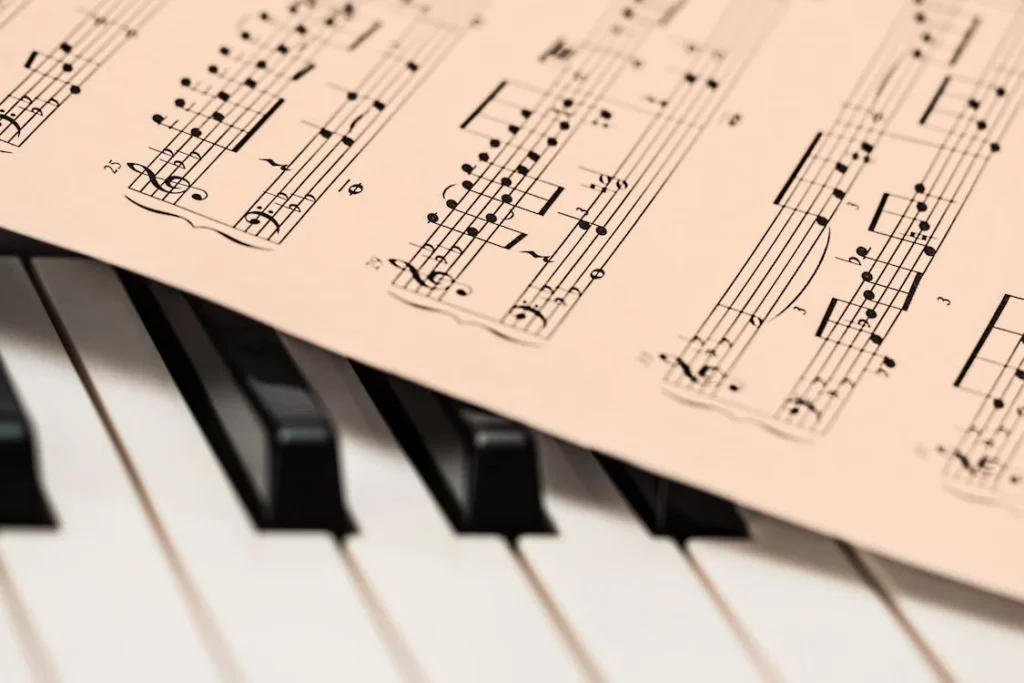
Hiring Professional Piano Movers: A How-To Guide
When it comes to moving a piano, especially if you have a valuable or delicate instrument, hiring professional piano movers can be a wise decision. Here’s a comprehensive guide on the benefits of hiring experts and how to find reputable piano moving companies:
Understanding the Benefits of Expert Piano Movers
Specialized Expertise
Professional piano movers have specialized knowledge and experience in handling pianos of all types and sizes. Their expertise ensures a safe and secure move, minimizing the risk of damage to your instrument.
Proper Equipment
Piano moving companies are equipped with the necessary tools and equipment, including skids, straps, dollies, and ramps, designed specifically for piano transportation. This specialized equipment ensures the piano’s safety during the move.
Risk Mitigation
Professional movers are insured, providing an added layer of protection for your piano. In case of any unforeseen accidents or damage, you have the assurance that the costs will be covered.
Time and Effort Savings
Hiring experts saves you the time and effort required for planning, gathering equipment, and recruiting a moving team. Professionals handle every aspect of the move efficiently.
How To Find Reputable Piano Moving Companies
Research and Recommendations
- Online Research: Start by researching piano moving companies online. Look for reviews and ratings on reputable review websites and forums.
- Recommendations: Ask for recommendations from friends, family, or colleagues who have previously used piano moving services.
Check Credentials
- License and Insurance: Ensure that the piano moving company is licensed and insured. This provides legal protection and coverage in case of any mishaps.
- Experience: Inquire about the company’s experience and track record in piano moving. A well-established company is often a reliable choice.
Obtain Quotes
- Request Quotes: Contact multiple piano moving companies and request quotes for your specific move. Compare the quotes to understand pricing and services included.
- On-Site Assessment: Some companies may offer on-site assessments to provide accurate quotes based on the piano’s size and the moving conditions.
Verify References
- Ask for References: Request references from the piano moving company. Contact past customers to inquire about their experiences and satisfaction with the services provided.
Contracts and Agreements
- Read Contracts: Carefully review any contracts or agreements provided by the moving company. Ensure that you understand the terms and conditions before proceeding.
Hiring professional piano movers can provide peace of mind and ensure the safe and secure transportation of your valuable instrument. By following these steps to find reputable piano moving companies, you can make an informed decision for your piano move.
How To Move a Piano Yourself: Step-by-Step Instructions
If you’re considering a do-it-yourself (DIY) approach to moving your piano, it’s essential to follow a step-by-step guide to ensure a safe and successful relocation. Here’s a comprehensive guide on how to move a piano yourself:
Gathering the Necessary Equipment for a DIY Move
Before you start moving your piano, gather all the essential equipment you’ll need:
Equipment Checklist
- Piano Dollies: Invest in high-quality piano dollies with sturdy wheels. Ensure they can support the weight of your piano.
- Moving Straps: Purchase moving straps designed for heavy objects. These will help distribute the weight and make lifting more manageable.
- Furniture Blankets and Padding: Acquire furniture blankets and padding to protect your piano from scratches and damage during the move.
- Ramps: If you’ll encounter stairs or elevation changes, have suitable ramps on hand to assist with the piano’s movement.
Recruiting Friends or Family Members for Assistance
Moving a piano is a challenging task, and it’s essential to have a team of helpers. Here’s how to recruit friends or family members for assistance:
- Safety Briefing: Conduct a safety briefing with your team to go over proper lifting techniques, communication, and safety precautions.
- Assign Roles: Delegate specific roles to each team member, such as positioning, lifting, and guiding the piano.
- Coordinate Movements: Ensure everyone is aware of their responsibilities and coordinates their movements to avoid accidents.
Safely Navigating and Transporting Your Piano
Now that you have your equipment and moving team ready, it’s time to safely navigate and transport your piano:
Lifting and Securing the Piano
- Use Moving Straps: Strap the piano securely to the dolly using moving straps. Ensure that the piano is balanced and stable.
- Proper Lifting: Follow proper lifting techniques by bending at the knees, keeping your back straight, and using your leg muscles to lift the piano.
- Teamwork: Coordinate with your team to lift the piano onto the dolly carefully. Ensure that it is positioned securely.
Maneuvering Through Obstacles
- Stairs and Steps: If you encounter stairs or steps, use ramps to navigate them smoothly. Have team members positioned to assist with the piano’s movement.
- Narrow Passageways: Clear narrow hallways or doorways of obstacles and ensure there’s enough space to maneuver the piano without damage.
- Communication: Maintain clear communication with your team throughout the move to ensure everyone is on the same page.
Loading into Transportation
- Moving Vehicle: Load the piano carefully into your chosen transportation vehicle. Use ramps or dollies to ease the process.
- Securing Inside the Vehicle: Ensure that the piano is secured inside the vehicle to prevent shifting or tipping during transit.
- Drive Cautiously: Drive cautiously and avoid sudden stops or sharp turns to protect the piano during transportation.
By following these step-by-step instructions and taking all necessary precautions, you can successfully move a piano yourself with the help of your team and the right equipment.

Common Mistakes to Avoid
When moving a piano, it’s essential to be aware of common mistakes that can lead to accidents, damage to the piano, or unnecessary challenges. Here are the key mistakes to avoid during the piano moving process:
Overestimating or Underestimating Manpower
Overestimating Manpower
- Mistake: Attempting to move a piano with too many helpers can lead to confusion and increased risk of accidents.
- Solution: Assign a suitable number of helpers based on the piano’s type and size, and ensure clear communication and coordination.
Underestimating Manpower
- Mistake: Moving a piano with insufficient helpers can strain individuals, lead to poor lifting techniques, and increase the risk of injury.
- Solution: Adequately assess the piano’s weight and the moving path’s challenges to determine the required number of helpers.
Rushing the Moving Process
- Mistake: Moving a piano hastily can result in accidents, damage to the piano, and potential injuries to the moving team.
- Solution: Take your time and follow a careful step-by-step approach. Prioritize safety and ensure that all team members are comfortable with each stage of the move.
Neglecting Safety Precautions
- Mistake: Failing to implement safety precautions, such as proper lifting techniques and protective gear, can lead to injuries.
- Solution: Prioritize safety by providing safety briefings, using lifting straps, and ensuring that everyone follows safe practices.
Inadequate Protection for the Piano
- Mistake: Failing to protect the piano adequately with blankets or padding can result in scratches or damage during the move.
- Solution: Use furniture blankets and padding to cushion and protect the piano’s surfaces.
Skipping a Post-Move Inspection
- Mistake: Neglecting to inspect the piano for damage after the move can lead to unnoticed issues that may require repair.
- Solution: Conduct a thorough inspection of the piano to check for any damage and address it promptly.
By avoiding these common mistakes, you can ensure a smoother and safer piano moving process. Taking the time to plan, coordinate, and follow safety guidelines will help protect both your piano and the moving team. In the final section, we’ll discuss post-move care and the importance of scheduling a piano tuning after relocation.
Post-Move Care and Tuning: What You Need to Know
After successfully moving your piano to its new location, there are essential steps to take to ensure its well-being and maintain its sound quality. Here’s what you need to know about post-move care and scheduling a piano tuning:
Checking for Damage
Thorough Inspection
- Mistake: Neglecting to inspect the piano for any potential damage or issues immediately after the move.
- Solution: Conduct a thorough visual inspection of the piano to check for scratches, dents, or any signs of damage.
Addressing Damage
- Mistake: Failing to address any damage or issues promptly can lead to further deterioration of the piano.
- Solution: If you notice any damage, contact a professional piano technician or repair specialist to assess and repair the piano as needed.
When to Schedule a Piano Tuning
Post-Move Adjustment
- Importance: Moving a piano can cause it to go out of tune due to changes in humidity, temperature, and the physical stresses of transportation.
- Solution: Schedule a piano tuning a few weeks after the move to allow the instrument to acclimate to its new environment.
Regular Tuning
- Importance: Pianos require regular tuning to maintain their optimal sound quality and playability.
- Solution: Establish a schedule for ongoing piano tunings, typically every six months to a year, depending on factors like usage and climate.
Professional Tuning Services
- Recommendation: Hire a professional piano tuner or technician to perform the tuning. They have the expertise and tools to ensure the piano is tuned accurately.
By checking for damage, addressing any issues promptly, and scheduling a piano tuning after the move, you’ll ensure that your piano continues to deliver beautiful and harmonious music in its new location.
Contact Our Piano Movers Today
By following these guidelines, you can ensure a smooth and successful piano move, whether you’re relocating to a new home or simply rearranging your living space. Remember that proper planning, safety precautions, and care are essential to protect both your valuable piano and the well-being of your moving team.
Ready to make your piano move a harmonious success? Whether you choose professional piano movers or a DIY approach, ensure the safety of your precious instrument and the peace of mind you deserve. Follow our comprehensive guide for a smooth piano relocation, and don’t forget to schedule that post-move tuning for a perfect performance. Your piano awaits its new stage – make it an applause-worthy journey!